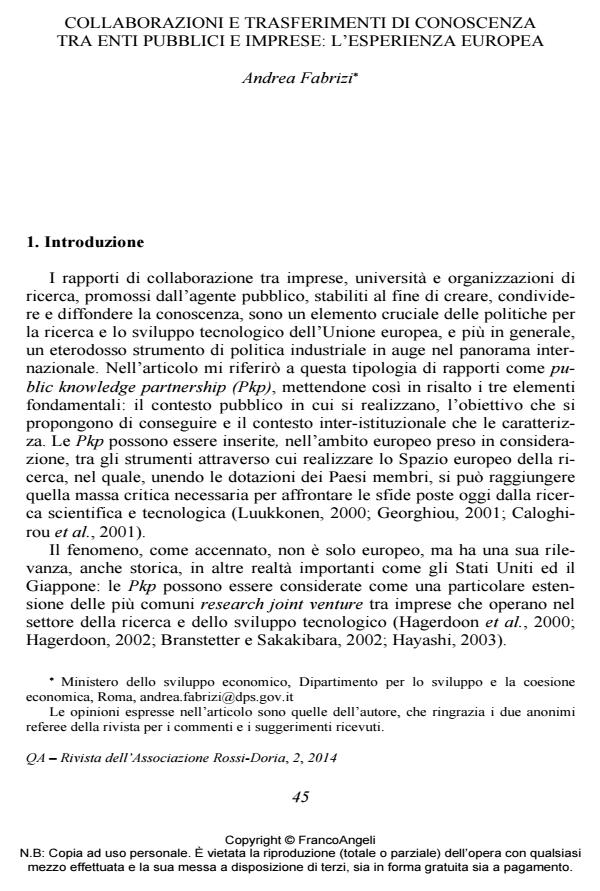Collaborazioni e trasferimenti di conoscenza tra enti pubblici e imprese: l’esperienza europea
Titolo Rivista QA Rivista dell’Associazione Rossi-Doria
Autori/Curatori Andrea Fabrizi
Anno di pubblicazione 2014 Fascicolo 2014/2
Lingua Italiano Numero pagine 30 P. 45-74 Dimensione file 180 KB
DOI 10.3280/QU2014-002002
Il DOI è il codice a barre della proprietà intellettuale: per saperne di più
clicca qui
Qui sotto puoi vedere in anteprima la prima pagina di questo articolo.
Se questo articolo ti interessa, lo puoi acquistare (e scaricare in formato pdf) seguendo le facili indicazioni per acquistare il download credit. Acquista Download Credits per scaricare questo Articolo in formato PDF

FrancoAngeli è membro della Publishers International Linking Association, Inc (PILA)associazione indipendente e non profit per facilitare (attraverso i servizi tecnologici implementati da CrossRef.org) l’accesso degli studiosi ai contenuti digitali nelle pubblicazioni professionali e scientifiche
Collaborazioni e trasferimenti di conoscenza tra enti pubblici e imprese: l’esperienza europea L’articolo indaga quel particolare fenomeno che sono i rapporti di collaborazione tra imprese, università e organizzazioni di ricerca. Tali rapporti, promossi dall’agente pubblico, vengono stabiliti al fine di creare, condividere e diffondere la conoscenza. Un esempio di queste peculiari collaborazioni sono i progetti finanziati dall’Unione europea nell’ambito dei Programmi quadro (PQ) per la ricerca e lo sviluppo tecnologico. L’ipotesi di lavoro, confermata dalle evidenze empiriche, è che i legami attivati all’interno di questi progetti stimolino la creazione di conoscenza nei Paesi aderenti ai PQ, grazie ai flussi di conoscenza che questi, direttamente e non, attivano
Parole chiave:Conoscenza, Ricerca e sviluppo, Unione europea
Andrea Fabrizi, Collaborazioni e trasferimenti di conoscenza tra enti pubblici e imprese: l’esperienza europea in "QA Rivista dell’Associazione Rossi-Doria" 2/2014, pp 45-74, DOI: 10.3280/QU2014-002002